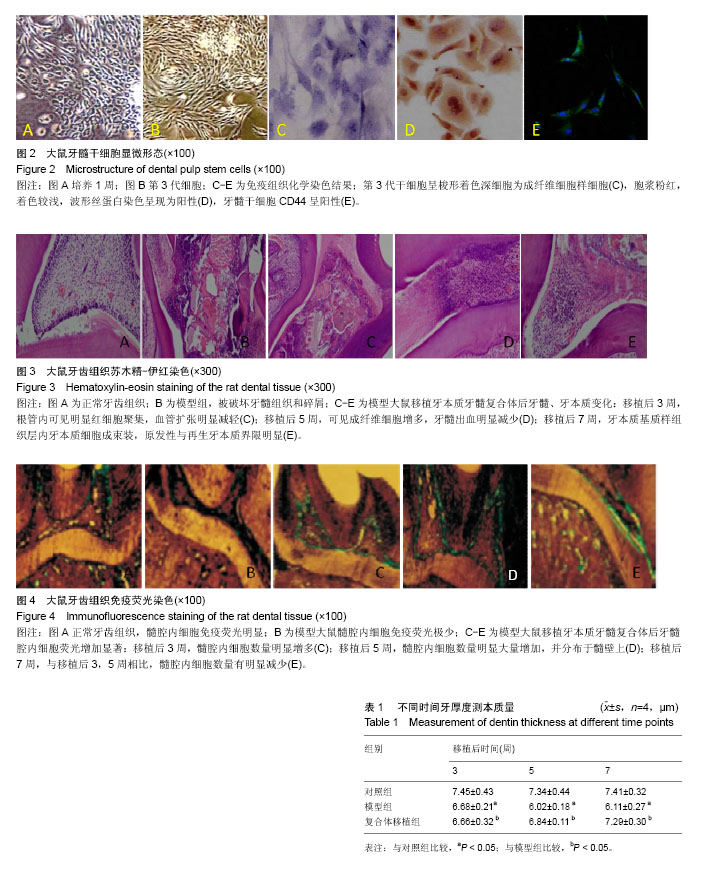| [1] 杨林,张君平,李继遥.龋病风险评估系统的研究进展[J].牙体牙髓牙周病学杂志,2015,25(3):179-183. [2] Gholami M, Knoll N, Schwarzer R. A Brief Self-Regulatory Intervention Increases Dental Flossing in Adolescent Girls. Int J Behav Med. 2015;22(5):645-51. [3] 赵寅华.富血小板衍生物及与牙周膜干细胞复合促脱位再植牙牙周膜愈合的研究[D].西安:第四军医大学,2013.[4] Wang Z, Feng Z, Wu G, et al. In vitro studies on human periodontal ligament stem cell sheets enhanced by enamel matrix derivative. Colloids Surf B Biointerfaces. 2016;141(1): 150A.[5] Heng NH, Zahlten J, Cordes V, et al. Effects of enamel matrix derivative and transforming growth factor-β1 on connective tissue growth factor in human periodontal ligament fibroblasts. J Periodontol. 2015;86(4):569-577.[6] Gao H, Li B, Zhao L, et al. Influence of nanotopography on periodontal ligament stem cell functions and cell sheet based periodontal regeneration. Int J Nanomed. 2015;10:4009-4027.[7] Valmikinathan CM, Chang W, Xu J, et al. Self assembled temperature responsive surfaces for generation of cell patches for bone tissue engineering. Biofabrication. 2012;4(3):035006.[8] 闫钧.antimi R-138修饰的rBMMSCs膜片的构建及其与种植体复合后的体内外生物学研究[D].西安:第四军医大学,2014.[9] Masuda S, Shimizu T. Three-dimensional cardiac tissue fabrication based on cell sheet technology. Adv Drug Deliv Rev. 2016;96:103-109.[10] Sakaguchi K, Shimizu T, Okano T. Construction of three-dimensional vascularized cardiac tissue with cell sheet engineering. J Control Release. 2015;205:83-88.[11] Dissanayaka WL, Zhan X, Zhang C, et al. Coculture of dental pulp stem cells with endothelial cells enhances osteo-/odontogenic and angiogenic potential in vitro. J Endod. 2012;38(4):454-463.[12] 袁梦桐,胡伟平,周海燕,等.体外克隆化传代培养人年轻恒牙牙髓干细胞的研究[J].口腔医学研究,2010,26(5):624-626.[13] 鲁红,吴织芬,田宇,等.应用细胞-支架构建方式的组织工程方法促进牙周组织再生的实验研究[J].牙体牙髓牙周病学杂志,2005, 5(1):14-18.[14] 何飞,杨峥嵘,谭颖徽.Delta1基因转染人牙髓干细胞牙本质形成能力的研究[J].中国修复重建外科杂志,2007,21(10):1133-1136.[15] 金岩.组织工程学原理与技术[M].西安:第四军医大学出版社, 2004.[16] Chen RS, Chen MH, Young TH. Induction of different iation and mineralization in rat tooth germ cells on PVA through inhibition of ERK1/2. Biomaterials. 2009;30(4):541-547.[17] Ta?l? PN, Sahin F. Effect of lactoferrin on odontogenic differentiation of stem cells derived from human 3rd molar tooth germ. Appl Biochem Biotechnol. 2014;174(6): 2257-2266.[18] Lei M, Li K, Li B, et al. Mesenchymal stem cell characteristics of dental pulp and periodontal ligament stem cells after invivo transplantation. Biomaterials. 2014;35(24):6332-6343.[19] 赵伟,陆家瑜,邹德荣,等.山羊乳牙牙髓细胞分离培养与矿化诱导的体外研究[J].上海口腔医学,2011,20(3):234-240.[20] 刘奕杉,王璇,李伯琦,等.改良酶消化法分离培养人乳牙牙髓干细胞[J].中国组织工程研究,2013,17(10):1793-1800.[21] Riccio M, Maraldi T, Pisciotta A, et al. Fibroin scaffold repairs critical-size bone defects in vivo supported by human amniotic fluid and dental pulp stem cells. Tissue Eng Part A. 2012; 18(9/10):1006-1013.[22] Hilkens P, Fanton Y, Martens W, et al. Pro-angiogenic impact of dental stem cells in vitro and in vivo. Stem Cell Res. 2014;12(3):778-790.[23] Yu F, Dong Y, Yang YW, et al. Effect of an Experimental Direct Pulp-capping Material on the Properties and Osteogenic Differentiation of Human Dental Pulp Stem Cells. Sci Rep. 2016;6:34713.[24] Ratajczak J, Bronckaers A, Dillen Y, et al. The neurovascular properties of dental stem cells and their importance in dental tissue engineering. Stem Cells Int. 2016;16:9762871.[25] Özdal-Kurt F, ?en BH, Tu?lu I, et al. Attachment and growth of dental pulp stem cells on dentin in presence of extra calcium. Arch Oral Biol. 2016;68:131-141.[26] Nosrat IV, Smith CA, Mullally P, et al. Dental pulp cells provide neurotrophic support for dopaminergic neurons and differentiate into neurons in vitro; implications for tissue engineering and repair in the nervous system. Eur J Neurosci. 2004;19(9):2388-2398.[27] Bray AF, Cevallos RR, Gazarian K, et al. Human dental pulp stem cells respond to cues from the rat retina and differentiate to express the retinal neuronal marker rhodopsin. Neuroscience. 2014;280:142-155.[28] Jaumotte JD, Zigmond MJ. Comparison of GDF5 and GDNF as neuroprotective factors for postnatal dopamine neurons in ventral mesencephalic cultures. J Neurosci Res. 2014;92(11): 1425-1433.[29] 李景辉,张方明,张振庭.人恒牙牙髓干细胞分化为脂肪细胞的体外实验研究[J].北京口腔医学,2012,20(3):142-146.[30] Li JH, Liu DY, Zhang FM, et al. Human dental pulp stem cell is a promising autologous seed cell for bone tissue engineering. Chin Med J (Engl). 2011;124(23):4022-4028.[31] 王钰莹,运慧媛,缪宏颖,等.成骨细胞与矿化液诱导牙髓干细胞向成骨细胞分化的对比研究[J].中华口腔医学杂志,2012,47(6): 364-368.[32] 苟文亭,叶玲,谭红.牙髓干细胞分化的研究进展[J].国际口腔医学杂志,2012,39(3):380-383.[33] Kanafi M, Majumdar D, Bhonde R, et al. Midbrain cues dictate differentiation of human dental pulp stem cells towards functional dopaminergic neurons. J Cell Physiol. 2014; 229(10):1369-1377.[34] Chang CC, Chang KC, Tsai SJ, et al. Neurogenic differentiation of dental pulp stem cells to neuron-like cells in dopaminergic and motor neuronal inductive media. J Formos Med Assoc. 2014;113(12):956-965.[35] Majumdar D, Kanafi M, Bhonde R, et al. Differential Neuronal Plasticity of Dental Pulp Stem Cells From Exfoliated Deciduous and Permanent Teeth Towards Dopaminergic Neurons. J Cell Physiol. 2016;231(9):2048-2063.[36] Huojia M, Wu Z, Zhang X, et al. Effect of Dental Pulp Stem Cells (DPSCs) in Repairing Rabbit Alveolar Bone Defect. Clin Lab. 2015;61(11):1703-1708.[37] Zhu L, Yang J, Zhang J, et al. In vitro and in vivo evaluation of a nanoparticulate bioceramic paste for dental pulp repair. Acta Biomater. 2014;10(12):5156-5168.[38] Abo El-Ela OA, Atta OA, El-Mowafy O. Microtensile bond strength of nonmetallic dowels bonded to radicular dentin with self-etch adhesives. J Prosthodont. 2009;18(2):167-171.[39] Büttel L, Krastl G, Lorch H, et al. Influence of post fit and post length on fracture resistance. Int Endod J. 2009;42(1):47-53.[40] Winter W, Karl M. Dehydration-induced shrinkage of dentin as a potential cause of vertical root fractures. J Mech Behav Biomed Mater. 2012;14:1-6. |
.jpg)

.jpg)
.jpg)